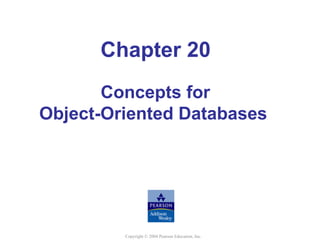The document discusses object-oriented concepts for databases including:
- Objects have state represented by properties and behavior represented by operations.
- Objects encapsulate data and methods that operate on the data.
- Objects have a unique identifier and can be constructed from other objects using type constructors like tuple and set.
- Examples are provided to illustrate object identity, structure, and type constructors using a company database schema.
























































